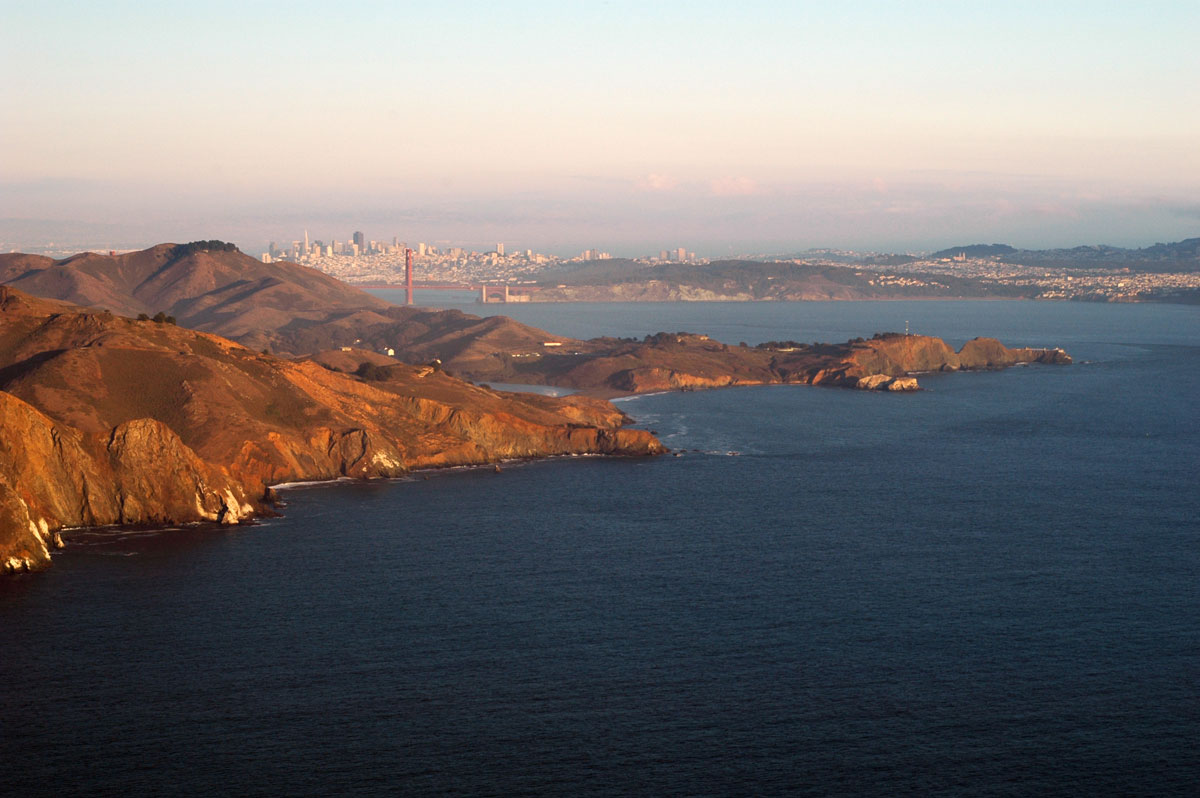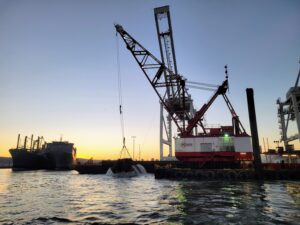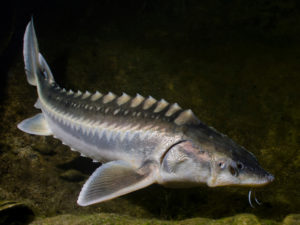hen it comes to the water in the San Francisco Bay, the ocean doesn’t get nearly the credit it deserves. At least, that’s the opinion of oceanographer John Largier, who studies the ocean’s complex dance with the Bay. Sure, the Bay is where the Delta empties into the sea, the final resting place of water that flows all the way from the Sierra and the furthest reaches of the watershed. But the Bay is, it’s worth pointing out, mostly seawater. Whatever’s in it is affected by what’s happening in the ocean, particularly the active upwelling just off our coast.
By bringing cold water up to the surface, upwelling helps create conditions for the fog that often blankets San Francisco. And it also acts like fog’s underwater equivalent, Largier says. Just as the fog flows into the city as a dense, low-lying layer of cloud, ocean upwelling can lead to “cold ocean water pushing in like a wedge underneath the Bay waters.”
Unfortunately, our understanding of ocean upwelling entering the Bay is just as cloudy. The rivers’ effects on the Bay’s water quality are reasonably well-studied: the U.S. Geological Survey has monitored water quality in the Delta continuously since 1988; dozens of papers are published every year on river inputs; and there’s an entire scientific journal, San Francisco Estuary and Watershed Science, dedicated to the topic of the Bay, Delta, and upstream water health. By contrast, we know relatively little about the ocean’s role in creating conditions in the Bay—in studies, it’s more often seen as a passive receiver of freshwater than as a player in its own right.
Largier, a researcher at UC Davis’s Bodega Marine Lab, wants to change all that, starting with the basics: What is the “reach of the ocean” in the Bay? When and where does ocean water flow into the Bay? What kind of water is it, chemically? And how far into the Bay does this water go?
After all, a vast amount of water flows through the Golden Gate at every tide. “The Bay is really part of the ocean,” Largier says.
Born in South Africa and trained in oceanography at the University of Cape Town, Largier has always been interested in west-facing ocean coasts. At these boundaries, wind and water currents combine to pull up dense seawater from the ocean floor. This water is chemically distinct, bringing up a potent mixture of nutrients that makes upwelling areas some of the most biologically rich areas on Earth.
This upwelled water does enter the Bay, Largier says, but so far it’s been difficult to track. The seawater, when it wells up, slips into the Bay underneath the less dense freshwater flowing into the ocean from the Bay’s watershed, so it often escapes researchers’ notice. It also doesn’t happen very often. To enter the Bay, the water needs to upwell high enough to flow over the shallow San Francisco bar just outside the Golden Gate. “Some days it gets over the bar and into the Bay and some days it doesn’t,” Largier says. But scientists don’t know when that happens or what controls it.
To track this upwelling water, Largier and his lab have set up an elaborate two-year plan to collect as much data about it as they can, funded by a California Sea Grant. They’ll deploy anchored sensors at six locations throughout the Bay, stepping further and further inland: offshore in the Gulf of the Farallones (which will record every instance of upwelling), between Golden Gate and the tidal bar, near shore around Stinson Beach, just inside Golden Gate, toward Richmond, and just past the Bay Bridge. “We’ll probably have them measuring every minute, every day, for four months,” Largier says. “No cold, rich water is going to sneak in without us seeing it.”
This month, at the onset of the summer upwelling season, the scientists will set out in boats to profile the ocean’s currents and chemical contents at 10 locations around the Golden Gate, Central Bay, San Pablo Bay, and South Bay.
Once we’ve accepted that the ocean leaves an enormous footprint in the Bay, the next step is figuring out whether the changes in oceans worldwide are percolating into our own small corner of the Pacific, and how these changes might affect the Bay’s ecology. Take, Largier says, low oxygen.
In April 2011, a USGS survey picked up evidence of a layer of water unusually low in oxygen that had intruded more than halfway into the Bay. Scientists had noticed hypoxic events on the Oregon coast in 2000, and Largier says that low-oxygen water comes up from other upwelling areas off the coasts of Peru and Chile. But before the 2011 occurrence, Largier had never seen signs of hypoxia in the Bay, and there have been no other records of it occurring in recent decades. “This upwelling of low-oxygen water is a fairly new thing,” he says.
Low oxygen levels, of course, are a problem for everything that breathes oxygen, especially bottom-dwelling organisms that can’t just swim to less suffocating waters. (“Particularly crabs,” Largier says. “They can’t run very fast.”) So hypoxia could kill large swaths of shellfish, corals, sea anemone, and other sedentary animals, and impact the livelihoods of Dungeness crab fishermen, among others.
We also don’t know how much nitrate—a nutrient that can encourage the growth of algal and plankton blooms—the ocean brings in. “The thing with the sea is that it gives and it takes away,” Largier says.
He and a colleague estimated that the ocean can bring in as much as 4,000 tons of nitrate with the tides (a much greater amount than the nitrate from treatment plants, stormwater, and refineries combined), but it’s hard to know how much gets washed back out to sea and how much stays behind.
The amount of phytoplankton in the Bay has increased, says Mélanie Raimonet, a postdoctoral scholar at USGS who has been analyzing long-term datasets of the Bay’s water quality. She’s noticed an uptick in chlorophyll amounts—which indicate phytoplankton levels—in the South Bay that she says is indirectly linked to increased upwelling.
The upwelling even contributes to an influx of predators into the Bay, including shrimp and English sole, that snarls up the food chain. “Indeed,” Raimonet wrote in an email, “the stronger upwelling activity increased the number of predators that entered the Bay and fed on benthic grazers.” More predators means fewer bottom-feeding clams to control phytoplankton populations, and the plankton have apparently been flourishing.
Largier corroborates her finding. “We haven’t been too worried about nutrient overgrowing in the San Francisco Bay because it hasn’t shown signs of it,” he says, “but recently there’s been an increase in the algal levels [in the Bay]. State regulators are desperate to figure out where all the nutrients are coming from.”
The same is true for ocean acidification, which causes a variety of problems for marine life. Largier’s colleagues estimate that globally, ocean pH has become 30 percent more acidic, but they have no idea if this acidic water is getting into the San Francisco Bay. If it is, that opens up a slew of new, troubling questions: Given that young oyster shells dissolve in more acidic water, how will the acidity affect ecosystems in the Bay where, for example, there are major oyster restoration projects in the works?
But these are all long-term concerns, unanswerable until Largier establishes the basics of when and how often upwelling occurs. “We’re not trying to solve a specific problem,” he says; at least, not yet. “We’re trying to understand the problems we want to address.”





